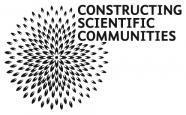The Weekly Entomologist (1862-63)
After five years of publication, the Entomologist's Weekly Intelligencer was discontinued in 1861. The editor, Henry Tibbats Stainton (1822-92), seems to have lost patience with the considerable workload of producing a new issue each week, and took this unpopular decision at the conclusion of the tenth volume. Insect collectors who had grown accustomed to their 'newspaper' were understandably bereft, and there was much discussion as to whom could step in to fill the void. In 1862, a new periodical was announced, entitled the Weekly Entomologist. This journal was printed on behalf of the Altrincham and Bowden Entomological Society, in Cheshire. The title of this group suggests a large gathering of men, but in fact, the Society consisted of three schoolboys: the brothers Thomas and John Blackburn (1844-1912 and 1845-81), and their friend Edmund Geldart (1844-85). All had been avid readers of the Intelligencer, and had sent several letters regarding their insect-hunting to Stainton in the hope of publication. When Stainton discontinued the Intelligencer, his three youthful correspondents took it upon themselves to supply a replacement.
The Weekly Entomologist was almost identical to the Intelligencer in appearance and content. The first editorial was entitled 'Union is Strength', and implored its readers to participate 'in a friendly spirit', without descending to the acrimony and in-fighting that had plagued the Intelligencer. Many of the same correspondents who had featured in Stainton's periodical now published in the new weekly, giving details of the insects they had captured and lists of those they wished to exchange. The focus remained predominantly on the practical aspects of collecting, rather than lengthy scientific papers of taxonomic classification. Another leading article angrily criticised the recently passed Poaching Prevention Act, as this permitted the arrest of anyone found loitering suspiciously upon land set aside for the hunting of game. Entomologists would often fall foul of gamekeepers, as the pursuit of moths in particular necessitated nocturnal visits to woods and fields, armed with nets and other equipment, which understandably aroused suspicion among those charged with the protection of such land. The editor urged entomologists to join 'hand in hand against our common foes', lest they be prevented from collecting insects entirely by the action of 'aristocrats'. He also attacked 'the railway capitalists, the farmer, the builder, the agriculturalist' - all those who wished to 'do away with the existence of insects'.

Title page for the second number of the Weekly Entomologist
Lacking the independent wealth with which Stainton funded the Intelligencer, the three schoolboys applied to the erstwhile editor for financial aid, and at first he was happy to oblige. However, the Weekly Entomologist struggled from the outset, failing to attract sufficient support from those who had previously read the Intelligencer. Furthermore, the production values of the periodical were much lower, with frequent errors in printing. Edmund Geldart, who would later recall his time editing the Weekly Entomologist alongside the Blackburn brothers in his memoir, A Son of Belial (1882), asserted that the local printer deliberately inserted these 'mistakes' in protest against insufficient payment. In one instance, a sentence on the subject of perseverance which should have read 'the goal is always before you', was instead printed as 'the gaol [jail] is always before you', significantly altering the meaning of the sentence. Ultimately, Stainton withdrew his support for the Weekly Entomologist, and it folded. Thomas Blackburn continued to correspond with Stainton, and upon moving to London, he collaborated with a number of other leading entomologist's in establishing and editing the Entomologist's Monthly Magazine in 1864. After a brief stint in the civil service, he took holy orders and was ordained as a priest, and ended his career as a canon in Australia. He maintained his interest in entomology, amassing a large collection of beetles that are now held by the Natural History Museum, London. John Blackburn also worked in the civil service, and continued to collect insects during the long holidays this afforded him. Geldart seems to have lost his interest in entomology, and had a varied career as a teacher, an Anglican priest, and (after undergoing a conversion) a Unitarian minister.
--Matthew Wale



